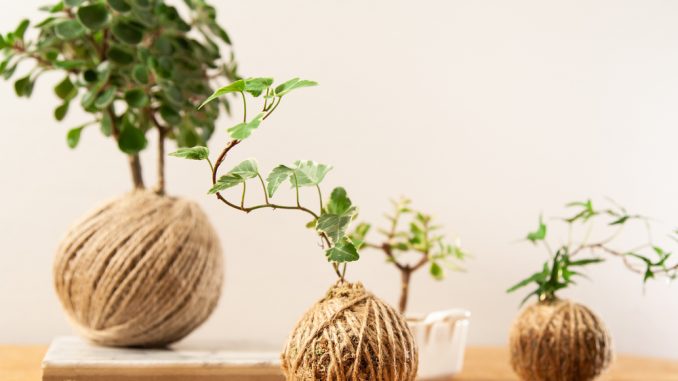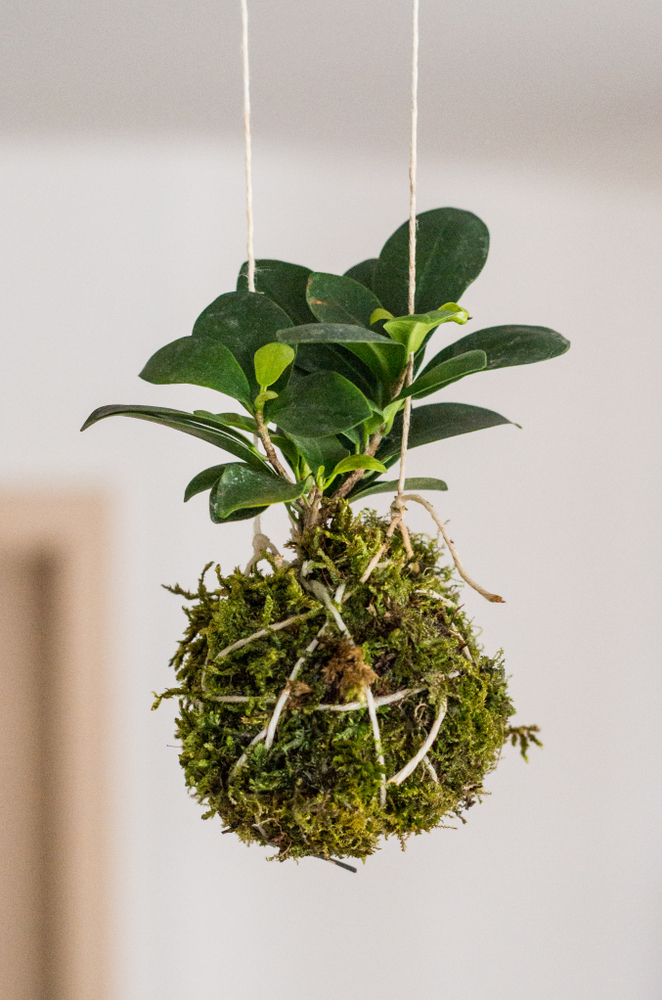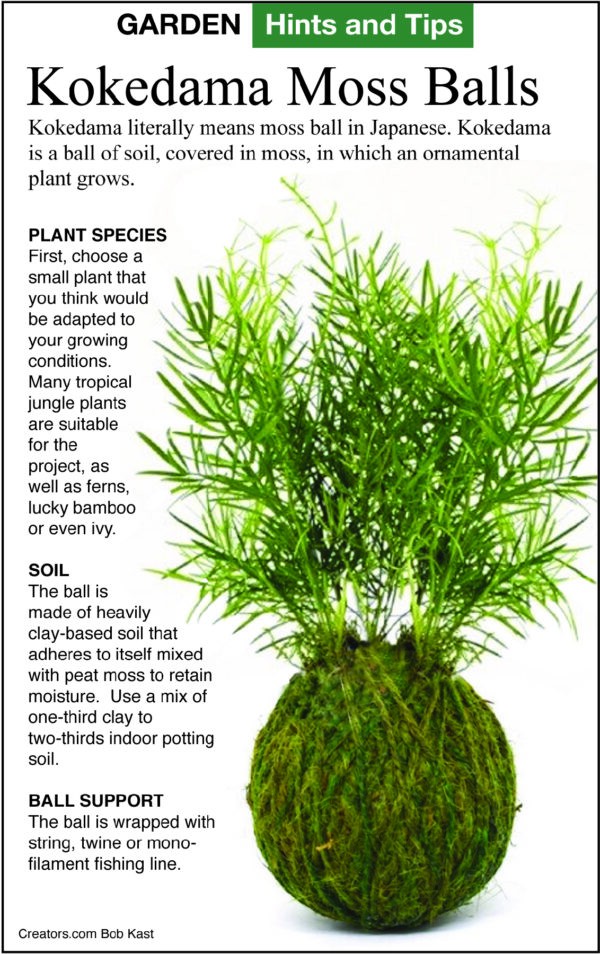
This traditional Japanese gardening style is a beautiful way to display small plants
“Koke” is Japanese for “moss.” And “dama” is possibly the translation for “ball,” or it could be “tama” and maybe mean “marble.” Even though there may be something lost in translation, “kokedama” is now considered to mean “moss ball.” In Japan, it has been a popular gardening style, similar to bonsai, and it is becoming more popular in the rest of the world.
The original style of Japanese moss ball uses heavy clay soil that will retain its ball shape on its own. Moss is then wrapped around the mud ball, where it grows naturally. It does not need to be tied to hold it together. Small, slow-growing plants such as ferns can be added to make the moss ball a flower pot.
It is a very simple planting method for small plants. You are simply replacing the standard plastic or clay pot with a wrapping of moss. If the plant would be grown in a loose potting soil, you make a ball out of the soil and wrap it in moss, but it will probably need to be tied to retain the round shape. If the plant would be planted into an orchid mix, such as the kind used for Phalaenopsis orchids or other epiphytes, you will need to tie it in place.
The moss ball pot can be admired in a tray or hung. Many plants that would grow in hanging baskets can be planted in kokedama. Epiphytic plants, including many orchids, tillandsias, bromeliads, and vines, grow well in hanging kokedama.

The moss used as the pot can be alive or dead. Moss comes in many forms, but the type known as sheet moss is what is used. There are many species of moss that grow in sheets. If you have some in your landscape, you can dig them up, but do not dig up moss in any forest preserve or location that you do not have permission. You can buy sheet moss at MossAcres.com or MossManInc.com. It might be called sheet moss, feather moss, or shag moss. You can also use long-strand sphagnum moss, which takes a little more time to wrap around the ball due to the many smaller pieces.
If you are using a mud ball, the first step is to get the soil wet enough that it will hold together and shape it into a ball about the size of a baseball.
Second, make a hole in the ball, and insert the plant roots. Reshape the soil to hold the plant in place. Since potting soil and orchid mix soil don’t hold their shape well, you can use cheesecloth or loose, porous fabric to hold the soil while you wrap it in moss.
Third, wrap the ball in moss, and use string or fish line to hold it in place.
Fourth, if the ball is going to be hung, you can stick a wire through the ball and bend a hook in it to hold it. If you are using string, tie the string to the string wrapping the ball, and adjust them until the plant hangs upright. Tie the hanger strings high on the ball, not in the middle, so the ball doesn’t tip over. Although, you can hang the plant so the plant hangs to the side or straight down, and the ball doesn’t have to be perfectly round.
If you are using live moss and you want to keep it alive, you will need to plant a shade-loving plant, since the moss will need to remain in the shade. If you are using a dead moss or sphagnum moss, you can grow a sun-loving plant. You will need to be more careful with the water, as the kokedama ball will dry out quickly in the sun and wind.
You can tell when the kokedama needs watering, as it will become very light when it is dry. The live moss will lose its bright green color, and the sphagnum moss will turn a much lighter brown than a wet sphagnum moss. You can use peat moss and sphagnum moss or water-retaining crystals in the soil to help retain moisture, since the moss ball planter will dry out faster than a plant in a pot due to the soil being completely exposed to the air. The balls can be misted daily, but even then, they may need to be dipped in water for a few minutes each week.
I have posted a video on how to make kokedama balls on the video page of GreenerView.com, with bonus information on making your own kokedama ball.
Email questions to Jeff Rugg at info@greenerview.com. To find out more about Jeff Rugg and read features by other Creators Syndicate writers and cartoonists, visit the Creators Syndicate website at Creators.com. Copyright 2021 Jeff Rugg. Distributed by Creators Syndicate.






Be the first to comment